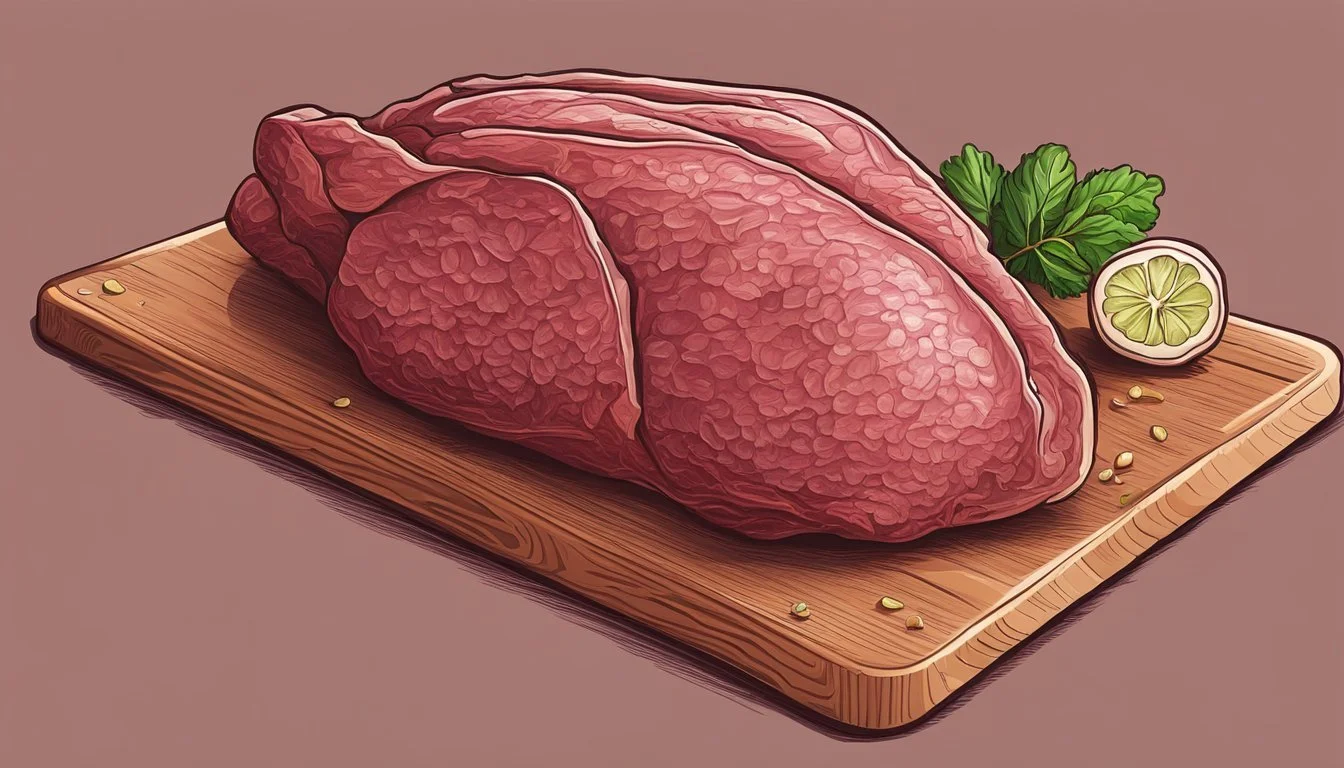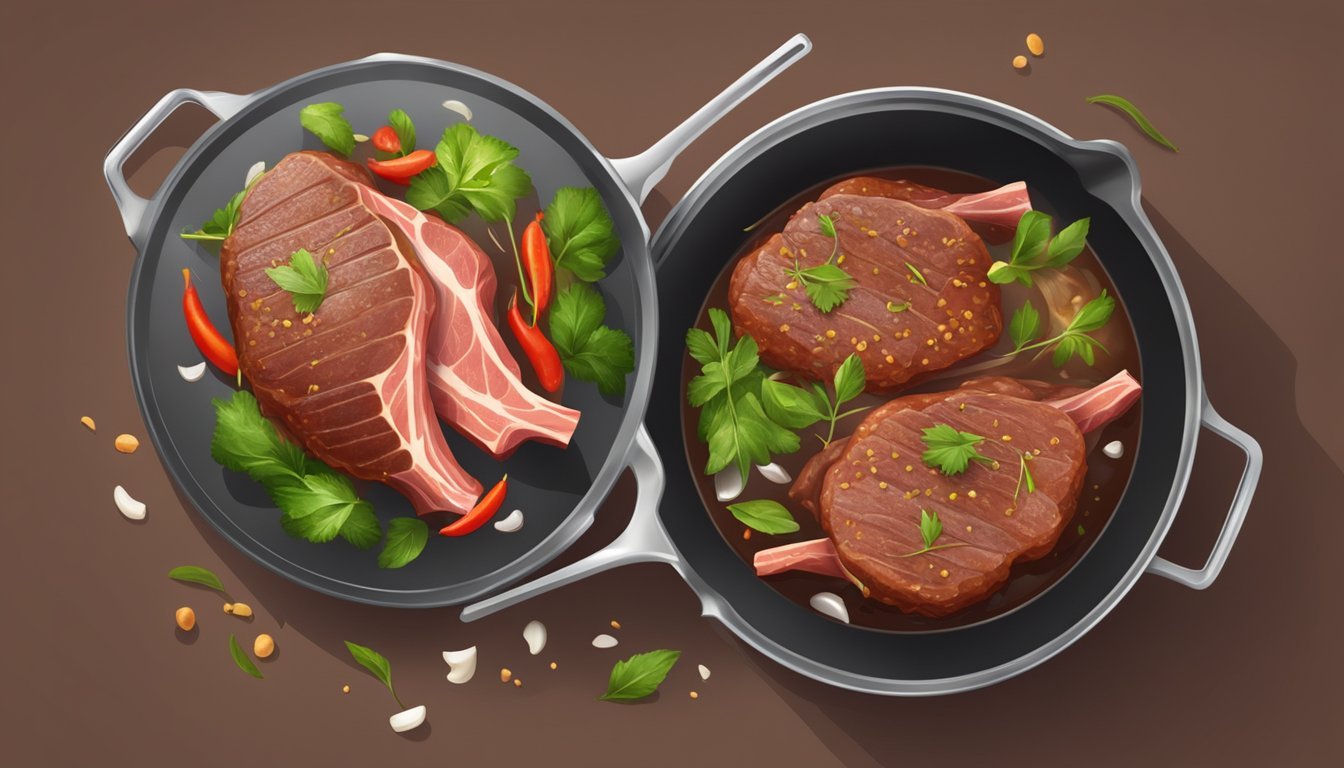Exploring the Nutritional Powerhouse of Polar Bear Liver
Benefits for Carnivores
Polar bear liver stands out as a nutritional powerhouse for those exploring extreme dietary sources. These arctic giants store astronomical amounts of vitamin A, especially in their livers, making them a unique subject of study for enthusiasts of carnivorous diets. Consuming the liver of a polar bear could provide an exceptional dose of retinol, a compound essential for various bodily functions.
Polar bears thrive on a meat-rich diet, and their livers reflect this adaptation. They accumulate vast amounts of retinol due to their high-fat diet, which includes seals and other marine animals. This high concentration, while beneficial in small doses, can be dangerously toxic in large quantities. Native populations in regions like Siberia, Alaska, and northern Canada have long recognized this, traditionally avoiding the consumption of polar bear liver.
The health implications for carnivores tapping into such a rich source of vitamin A are significant. While it offers unparalleled levels of nutrition, caution is paramount to avoid hypervitaminosis A—a condition resulting from excessive intake of vitamin A. This balance between nutritional benefits and potential toxicity underscores the complexity and allure of integrating polar bear liver into a carnivorous diet.
Anatomy and Nutrient Content of Polar Bear Liver
The polar bear liver, a dense source of essential nutrients, plays a pivotal role in the biology of Ursus maritimus. It is particularly known for its high vitamin A content and its involvement in hormone synthesis.
High Concentration of Vitamin A in Liver
Polar bear liver contains exceptionally high levels of vitamin A, far surpassing the amounts found in other animal tissues. This vitamin is stored in significant quantities in the liver due to the diet and fat storage mechanisms of polar bears. A typical polar bear liver has between 24,000 and 35,000 international units (IU) of vitamin A per gram, compared to a human liver which averages 575 IU per gram.
Such high concentrations are a result of evolutionary adaptations that allow polar bears to thrive in their nutrient-stressful environment. While beneficial to polar bears, this level of vitamin A can be toxic to humans, leading to symptoms like blurred vision and even death if consumed in large quantities.
Liver’s Role in Steroid Hormone Synthesis
The liver of Ursus maritimus also plays a fundamental role in the synthesis of steroid hormones. These hormones are crucial for numerous biological processes, including growth, metabolism, and reproductive functions. The liver supports these functions by converting cholesterol into steroid hormones, a process essential for maintaining the physiological balance.
Additionally, the liver's capacity to metabolize fats ensures that polar bears have a steady supply of energy, especially important during periods of nutritional stress. This metabolic adaptability is vital for survival in the harsh Arctic environment where food resources can be scarce.
Overall, the anatomy and nutrient content of polar bear liver reveal a complex interplay of biological functions that support the survival of this remarkable species.
Dietary Habits of Polar Bears
Polar bears, the apex predators of the Arctic, rely heavily on marine mammals, particularly seals, for their diet. Their feeding patterns are influenced by seasonal changes, availability of prey, and specialized hunting techniques.
Primary Sources of Prey
Polar bears primarily hunt ringed seals and, to a lesser extent, bearded seals. These seals are rich in fat, providing the high-calorie diet polar bears need for energy. Occasionally, they may consume other marine mammals like walruses and beluga whales, especially when seals are scarce.
Seals make up the bulk of their diet. Ringed seals are especially crucial. These seals are often caught by the bears at breathing holes in the sea ice or when they are basking.
Seasonal Variations in Diet
The diet of polar bears changes with the seasons. During the winter and spring, their main prey, seals, are abundant and accessible on the ice. This period is critical for them to build up fat reserves. In the summer when sea ice melts, polar bears might resort to scavenging on carcasses or foraging for bird eggs and vegetation.
In some regions, they may hunt narwhal or beluga whales trapped in ice or search for fish.
Hunting Techniques and Diet Specialization
Polar bears use a variety of specialized hunting techniques. They wait at seal breathing holes or stalk seals on the ice. Patience and stealth are vital, as seals are wary and vigilant. At times, they may break through ice to catch a seal or ambush one resting on the ice.
These techniques highlight their adaptability and specialization as hunters. Efficient scavengers too, they utilize carcasses left by other predators or those that have died naturally.
Polar bears' dietary habits underline their role as critical predators in the Arctic ecosystem. Their dependency on sea ice for hunting underscores their vulnerability to climate change. The loss of sea ice habitat threatens their ability to find sufficient food, impacting their survival and the ecological balance of the region.
Health and Dietary Requirements
Polar bears have unique health and dietary requirements, driven by their need for specific nutrients to support reproduction and metabolic adaptations essential for survival in extreme environments.
Nutritional Needs for Reproduction
For polar bears, sufficient nutrition is crucial for reproductive success. During the breeding season, the female polar bear requires a high intake of fatty acids and proteins to ensure healthy development of embryos.
Adequate body mass and stored fat reserves are key.
Pregnant females rely on rich sources of fat to sustain themselves and their cubs during the fasting period of hibernation. High-fat diets also provide energy crucial for lactation post-birth. Ensuring proper digestibility and nutritional quality is essential, as nutrient deficiencies can lead to poor reproductive outcomes and lower cub survival rates.
Metabolic Adaptation for Survival
Survival in the Arctic demands metabolic efficiency.
Polar bears excel in utilizing high-fat, low-protein diets which align with their natural prey, primarily seals. Such diets provide optimal energy levels while minimizing energetic costs associated with protein metabolism. Their metabolism is adapted to process and store large amounts of fat, which is imperative for endurance during periods of food scarcity.
This adaptation is not just about energy but also about maintaining body mass without excessive protein breakdown. The digestive system of polar bears is efficient in extracting and conserving essential nutrients from their prey, supporting their nutrition and survival in harsh environments.
Impact of Climate Change on Polar Bear Diet
Climate change is significantly altering the Arctic environment, affecting the availability and accessibility of prey for polar bears. These changes impose serious challenges on their dietary habits and nutritional intake.
Changes in Sea Ice and Prey Accessibility
Climate change has led to rapid melting of sea ice, which polar bears depend on to hunt seals, their primary prey. Thinning ice reduces their hunting grounds, forcing them to travel longer distances and expending more energy.
This environmental change also impacts the spatial and temporal availability of seals. Seals, especially ringed seals, rely on thick ice for birthing lairs. Reduced sea ice affects seal populations and their distribution, making it harder for polar bears to find sufficient amounts of food.
Fish and other marine life that were once easily accessible under stable ice conditions are now scattered, further complicating the bears’ hunting strategies. These shifts underscore the direct link between diminishing sea ice and the prey accessibility for polar bears.
Shifts in Food Resources and Nutrient Intake
As their traditional hunting grounds shrink, polar bears are forced to adapt by seeking alternative food sources. This shift often includes scavenging whale carcasses, consuming birds, and raiding human waste sites when they come ashore.
Such a diet shift impacts their nutrient intake. While seals provide a high-fat diet crucial for maintaining body mass and energy, alternative prey like bird eggs and fish offer less fat and more protein. This imbalance can lead to malnutrition. Extended periods without adequate food intake can result in lower survival rates, especially among cubs and mothers.
Nutritional stress from these changing resources not only affects their health but also their reproductive success, potentially leading to a decline in polar bear populations. This showcases the broad-reaching effects of climate-driven alterations in the Arctic on this apex predator.
Polar Bear Liver in Human and Animal Consumption
Polar bear liver poses significant risks for human consumption due to its extremely high vitamin A content. While some cultures have historical practices of avoiding it, domestic carnivores like cats and dogs may benefit differently from polar bear liver in controlled amounts.
Toxicity Risks of Vitamin A Overdose
Polar bear liver contains exceptionally high levels of vitamin A, also known as retinol. A single liver can hold between 24,000 and 35,000 international units (IU) per gram. This massive concentration can lead to hypervitaminosis A in humans, a potentially fatal condition. Symptoms include nausea, dizziness, and even death. Arctic explorers have historically faced fatal outcomes from consuming polar bear liver under nutritional stress. This is due to their bodies being unable to handle such large quantities of vitamin A.
Cultural Significance and Traditional Use
Indigenous peoples in regions like Siberia, Alaska, and Northern Canada have long been aware of the dangers posed by consuming polar bear liver. These communities historically avoided the liver, treating it as taboo. They understood the health risks involved and passed down this knowledge through generations. This practice highlights the profound connection between cultural beliefs and survival strategies in harsh, nutrient-scarce environments.
Dietary Supplementation for Domestic Carnivores
While polar bear liver is dangerous for humans, certain animals like cats and dogs might process vitamin A differently. These animals are obligate carnivores and have dietary requirements that often include vitamin A. However, it is crucial to emphasize that polar bear liver should be administered in very controlled amounts. Excess vitamin A can also be harmful to animals, leading to similar symptoms of toxicity. It is always recommended to consult a veterinarian before incorporating such elements into their diet.
In summary, while polar bear liver has a high nutritional value due to its vitamin A content, it is generally too potent and risky for human consumption. Indigenous practices and modern veterinary guidelines both underscore the importance of understanding and respecting these risks.
Carnivore Physiology and Dietary Assimilation
Carnivores have unique physiological traits that enable them to digest and assimilate nutrient-rich diets primarily composed of animal matter. These adaptations optimize the utilization of proteins and fats while ensuring minimal waste.
Digestive System Adaptation
The digestive systems of carnivores like dogs, cats, and wolves are specifically adapted to process animal proteins and fats efficiently. They have relatively short intestinal tracts, which facilitate the quick transit of food, minimizing the time for bacterial fermentation.
Enzymes such as pepsin and lipase are abundant, aiding in the breakdown of proteins into amino acids and fats into fatty acids. The stomach of a carnivore is highly acidic, with a pH that can drop to 1 or 2 during digestion, effectively denaturing proteins and killing pathogens present in raw meat.
Absorption occurs predominantly in the small intestine, where villi-rich surfaces enhance nutrient uptake. The liver, a crucial organ in carnivores, plays a central role in detoxifying metabolites from protein digestion and maintaining metabolic homeostasis.
Comparative Dietary Profiles
Carnivores' diets are rich in essential nutrients derived from animal tissues, such as taurine and specific amino acids like lysine and methionine, which are critical for various biological functions. In contrast with omnivores and herbivores, carnivores require higher levels of protein and fat to sustain their high-energy activities and basal metabolic rate.
Animals such as dogs and cats have evolved to efficiently utilize these nutrients, with differences evident among species based on their natural prey. For instance, wolves have a diet primarily consisting of large ungulates, while domestic cats often consume smaller prey like rodents and birds.
Metabolic adaptations in carnivores allow them to efficiently convert nutrients from meat into energy. Gluconeogenesis, the metabolic pathway wherein glucose is produced from non-carbohydrate substrates, is highly active in carnivores, ensuring a constant energy supply even in the absence of carbohydrates.
Through their specialized physiology, carnivores can thrive on a meat-based diet, obtaining all essential nutrients necessary for their survival and health.
Conservation and Management of Polar Bears
Human activities, climate change, and various legal frameworks influence the conservation and management of polar bears. Specific strategies and regulations aim to address these challenges and ensure the survival of the species.
Impact of Human Activities on Polar Bear Habitat
Human activities, particularly those related to climate change, pose significant threats to polar bear habitats. Declining Arctic sea ice is one of the most critical issues, as it directly impacts the bears' ability to hunt and access food. Industrial activities, such as oil and gas exploration, also disrupt polar bear environments and can lead to habitat degradation. Efforts to mitigate these impacts are essential for the conservation of polar bears.
Polar Bear Protection and Legal Frameworks
Several international agreements and national laws protect polar bears. The 1973 Agreement on the Conservation of Polar Bears signed by Canada, Denmark, Norway, the United States, and Russia, plays a pivotal role. This agreement focuses on reducing threats such as over-hunting and habitat destruction. National regulations in these countries also contribute to enforcement, ensuring that polar bear populations are monitored and conservation strategies are implemented effectively.
Future Prospects for Species Survival
The future of polar bears hinges on addressing climate change and preserving their habitats. Conservation efforts are increasingly focused on climate adaptation strategies, such as monitoring Arctic ice levels and protecting critical habitats. Research on polar bear health and diet, including new dietary management practices, enhances their survival prospects. Collaboration among governments, conservation organizations, and local communities is crucial for the ongoing protection and management of polar bears.
Conclusion
Polar bear liver is a nutritional powerhouse, particularly rich in vitamin A. Carnivores, especially those in northern regions, benefit from its high nutrient density. However, the consumption of polar bear liver in large quantities can be toxic due to excessive vitamin A content.
Modern dietary practices and climate change affect polar bear populations. Conservation efforts are vital for maintaining these species and their habitats. Polar bears play a crucial role in their ecosystems, and preserving their habitat is essential for ecological balance.
The traditional knowledge of northern native people highlights the risks associated with consuming polar bear liver. They have long avoided eating it, understanding its potential toxicity. This wisdom underscores the importance of respecting traditional practices and integrating them with modern nutritional science.
In examining the dietary habits and ecological roles of carnivores, it's clear that careful consideration must be given to both the nutritional benefits and the potential health risks of consuming polar bear liver. Conservation strategies should also ensure polar bears can thrive amidst changing climates.










